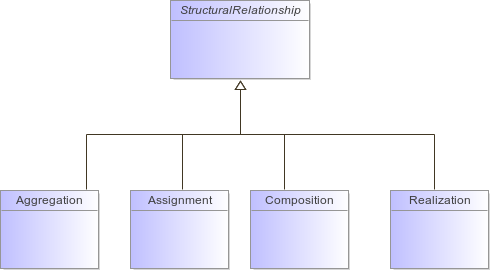
ArchiMate Metamodel
Structural relationships
Structural relationships represent the 'static' coherence within an architecture. The composing concept (the 'from' side of the relationship) is always an element; the composed concept (the 'to' side of the relationship) may in some cases also be another relationship.
As an alternative to the link graphical notation, structural relationships may also be expressed by means of nesting of the composed concept within the composing element.
Note, however, that this can lead to ambiguous models, in case multiple structural relationships are allowed between these elements.

Figure 143 : Structural Relationships (automatic)
Class | Summary |
|---|---|
The aggregation relationship indicates that an element groups a number of other elements. | |
The assignment relationship expresses the allocation of responsibility, performance of behavior,
location, or execution. | |
The composition relationship indicates that an element consists of one or more other elements. | |
The realization relationship models that an entity plays a critical role in the creation,
achievement, sustenance, or operation of a more abstract entity. | |